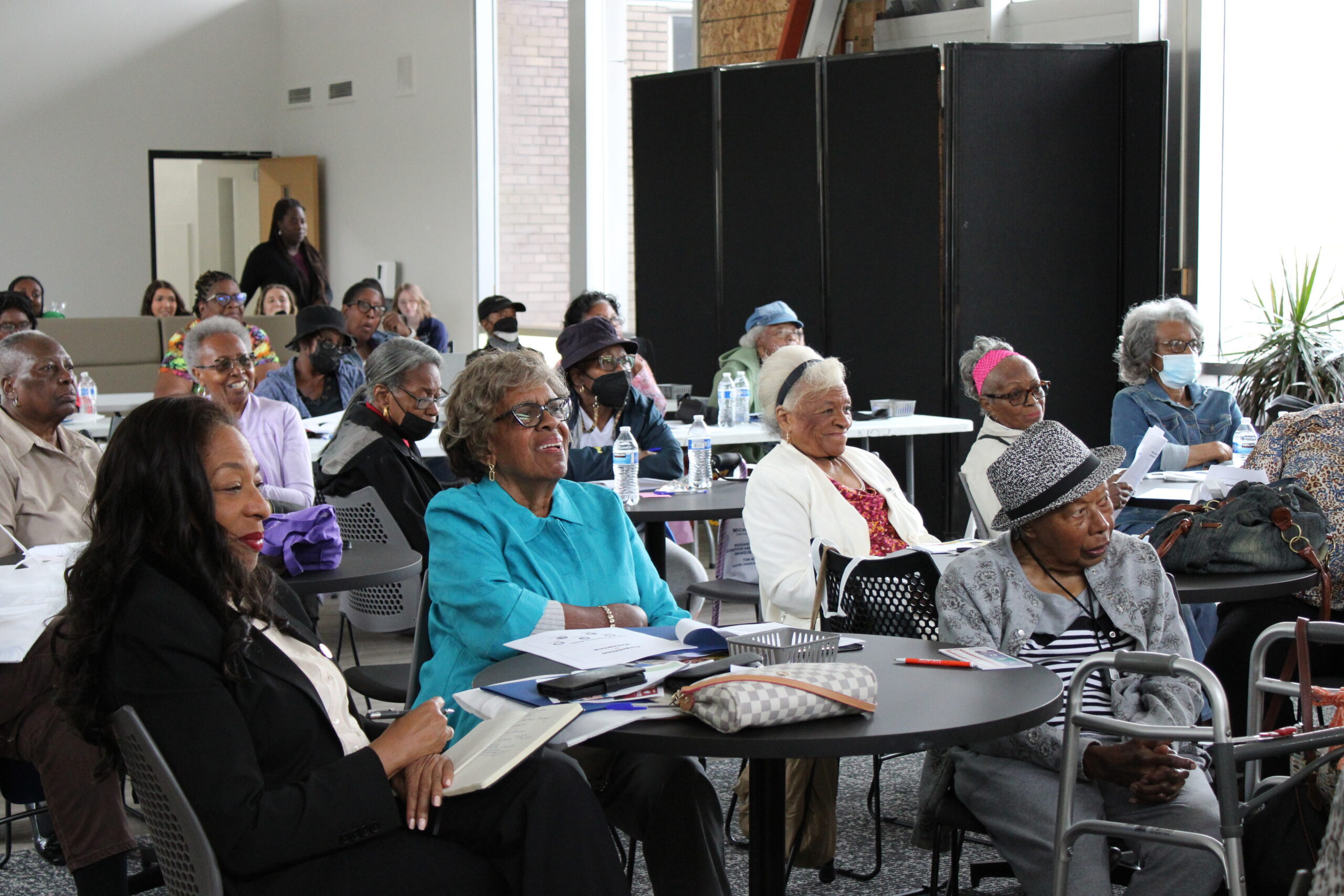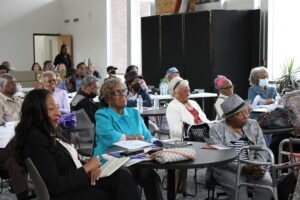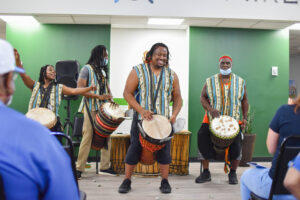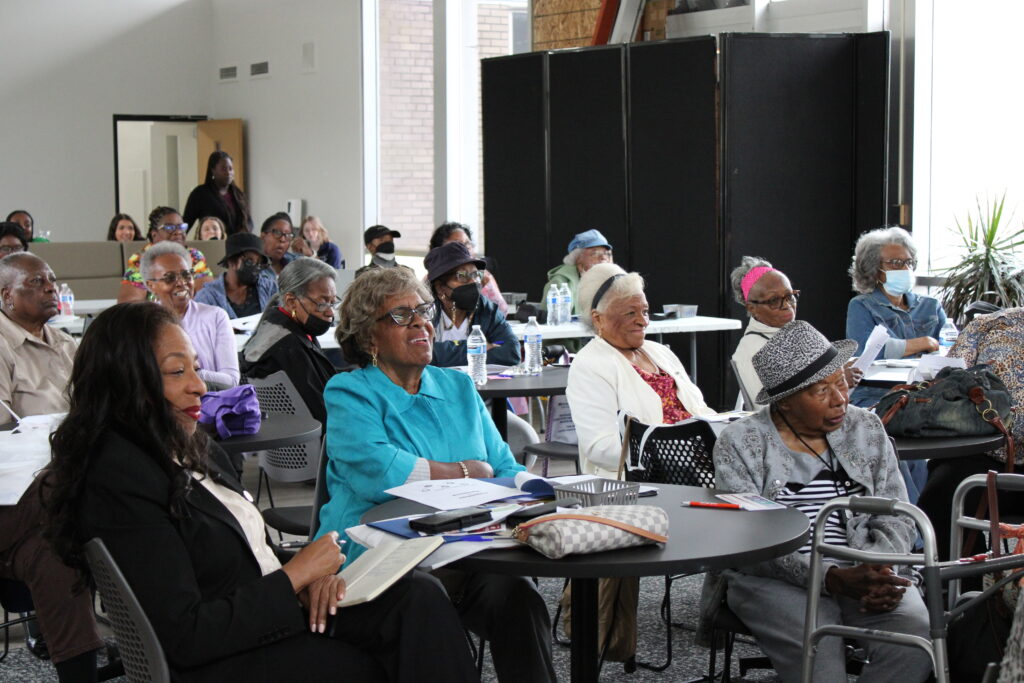Source: Special to Michigan News

Eastside Community Network gives residents a voice. Courtesy of ECN.

Eastside Community Network gives residents a voice. Courtesy of ECN.
Detroit’s East side is one of oldest parts of the city. It’s a community teeming with history –– a place where the auto plants, particularly Chrysler, first attracted people to close-knit neighborhoods like East Village, Conner Creek and Jefferson Chalmers. A lot has changed in Detroit over the years, but one thing has remained constant – the work of Eastside Community Network, an organization that for nearly 40 years has made sure residents have a voice about the area’s growth and development.
The organization has played an important role in many East side development initiatives – from turning a vacant area at Mack and Alter into a thriving retail complex to helping create more walkable, livable communities in neighborhoods such as West Village.
“When we originally started out, our goal was to ensure that we were creating safe spaces where folks could live, work, play and thrive on the East Side,” said Camille Johnson, director of development and communications for Eastside Community Network. “We’ve been able to do that through people power. We are a positive force for change.”
Eastside Community Network was formed in 1984, a time when Detroit – and some of the communities on the East side – looked different than they do today. Tell me about what you’ve done to bring these changes, and what you see ahead.
We started as a grassroots movement of folks coming together and saying, ‘Hey, we want to pull together our community resources to develop things.’ An example of that is the Mack/Alter square strip mall, which has become a big thoroughfare for the community. It houses a lot of businesses that we needed because the lower East Side for a long time has been not only a food desert, but also a commerce desert. You had to leave the lower East side to get so many of the basic things that you needed. As the years have gone on, we’ve also really become a leader in terms of different types of community change.

Camille Johnson
Climate equity work is integral to the work that UCN does right now. But it started out very small –– figuring out how we could reimagine vacant land use and use it in ways that would bolster our climate resilience and would create creative types of climate-based economies for our neighborhood, while also doing a triple role of beautification. I would say the same goes for our community development work and really thinking creatively to work with public and private partners to develop commercial thoroughfares that are useful for all residents. You see that a lot now with our Mack Avenue development work [from Alter Road to Moross Avenue] that’s been decades in the making.
We are building relationships with the Grosse Pointes, with the city of Detroit and with Wayne County. So we’re able to bring in all of those different resources, and then put our residents at the forefront and say, OK, what do you want to see and how can we work together to execute it?
What are some other examples of your work, and how has that led to create more livable, walkable communities?
I would start with West Village. In general, what we’ve focused ourselves on has been commercial development over the past 30 years. Right now, we’re in the process of focusing on housing, but in West Village, the building that Red Hook is in we actually owned and redeveloped. We recruited Red Hook and other businesses and then sold that space. We were really integral in bringing in some of that commerce that you’re seeing in West Village.
With respect to Mack Avenue for the past at least five years, but closer to 10 years, we have been part of the Mack Avenue development steering committee, whose focus has been to create cohesion across the entire Mack Avenue corridor from Alter Road all the way to Moross on both the Detroit side and the Grosse Pointe side.
We are working with folks to not only think about what businesses we are bringing in, or what physical improvements are we bringing, but we are ensuring that we’re bringing lighting that is useful and cohesive on both sides, and that we’re providing funding to small businesses on the corridor to fix their facades, fix their signs and update awnings.
And then we’re also looking into the future to say, what do we want to do with some of the vacant space on Mack? What types of businesses would we like to bring in and what types of structures will we want to bring in? We want to bring in a diverse cadre of businesses to the corridor with a goal of really making it something similar to what you would see on Woodward or on Main Street in Royal Oak –– in the sense that it again becomes a striving, living, breathing corridor that has so many things and where everyone feels welcome.
How does that involve others in the community? 
You want everyone from all these cities to feel comfortable, mingling and conducting business and just enjoying themselves up and down. It’s allowed us to really build or strengthen our relationships with the Grosse Pointes, which is super important to us because we’re so close, and we do have residents and folks who live in East English Village, Jefferson Chalmers and who live right on the border, and we want to connect them with resources as well.
How has your work affected the day-to-day lives of residents?
I think what we have seen is an improvement in quality of life for folks that have lived there. For years, folks that are longtime East side residents are being able to thrive within their community, being able to socialize within their community, being able to go out to dinner, which can seem like something small, but not having to go far away to have a nice dinner. They don’t have to drive far to go to a grocery store to get fresh food, and that has made a huge difference.
I also think we’ve seen an increase in folks coming to the East side and to engage with our businesses. It’s just really provided a lift in terms of what folks can walk to. Walkability is a big thing for us because public transportation in the city of Detroit is not always reliable. We also know that there are plenty of folks in the city of Detroit that don’t have reliable access to a car. And so having spaces where folks can easily walk have made people feel better about their neighborhoods.
It’s made the neighborhoods more livable, which has also had the impact of more folks wanting to move there. You have a lot of people who are moving back to the city after living other places. And when they’re looking for communities in Detroit that they want to live in, being able to live, work, play, do whatever you want to where you live is very attractive. We’ve been able to work together with other community organizations to slowly make the East side of Detroit a destination for where people want to live.
The East side of Detroit has been hit hard by flooding in recent years, and there has been a need to upgrade the water and sewer infrastructure as well as the electric grid, especially with the extreme weather events we have been having. What role has your organization had in that area at the residential, governmental and non-governmental level?
We come together to fight for and lobby for resources when needed for things like flooding. The East side of Detroit was one of the hardest hit areas with respect to flooding. And when these big rains happen and flash floods happen, they’re happening in Grosse Pointe and Detroit. So we focus on how we can start building relationships so that we can also cross-connect each other with resources and support to create some change.
I would say that right now, we have a three-pronged approach to dealing with flooding or supporting residents who are impacted by flooding. We initially started with physical infrastructure and green infrastructure improvement. We have a rainscape by Hamilton Elementary School, and we’ve also been able to install storm water swells.
The second piece that we’ve done that we really started in 2021 was borne out of need. When that storm happened (in June 2021) and we had that catastrophic flooding, we had hundreds of residents that needed help, that needed help connecting with FEMA, that needed help connecting with what they could get from the state of Michigan, that needed support to remediate their basements in their homes of water and mold and clean them.
They also needed support replacing things like boilers, hot water tanks and furniture. We received some grants from the Chase Foundation, as well as a few other partners, and through that we were able to supply over 35 homes with the new boilers and water tanks.
Obviously, there was a higher need, but we were able to help almost 300 residents remediate water and flooding in their homes, connecting them with contractors of folks that could support that piece. And then we also did a drive where we were able to connect folks with getting things they needed, whether it was clothes for their children, food, furniture and then obviously also trying to help them get the money that they needed through FEMA. That work that we did has now become a mainstay of what we do. Most of us live on the East side, so we have also experienced flooding. You’re able to understand the urgency of the need when you’re also living through it.
In what ways have you partnered with the University of Michigan to accomplish some of these things? What do you find most valuable?
We partner with the University of Michigan in so many ways. We partnered with the School of Information to support the work that we were doing as part of a CDC Foundation grant on COVID.
They helped us design that entire process to understand what people’s aversions were to the vaccine and to build out a strategy for promoting that in our community.
We are also one of the members of the MICEAL (Michigan Community Engagement Alliance) Steering Committee. As part of that steering committee, we’ve been able to be a part of how research and data has been collected as far as information from residents in the city of Detroit with respect to their feelings around COVID, vaccination, safety and all those things.
We have been able to take research from their doctors and School of Public Health and bring it back to our communities to educate folks and a partner with them to do some really cool work. That first year of our partnership, they actually paid for us to do vaccination fairs, and we were able to vaccinate residents free of charge — not just with the COVID vaccine, but also the influenza vaccine.
Just being able to participate on the steering committee has bolstered our knowledge, which has made us subject matter experts in the community. It’s expanded the types of resources that we’re able to connect folks with.
We have U-M School of Social Work interns every year, and they are always beloved members of our team that bring in amazing insights and knowledge and make us stronger. A lot of times they come back here and work here, which is really cool to see. University of Michigan has been an amazing partner – they have been able to connect us with tons of resources and tons of knowledge. They are a partner we can count on.
What advice would you give to others who are considering partnering with U-M?
Partnerships with U-M are invaluable. They take your work to places may not have imagined. Being able to work with brilliant minds and with folks who look at things differently will push you in your own work. They expand opportunities that you don’t expect. Our partnership with U of M has been inspiring. It’s the big things that you partner on as well as the little things where you can learn, improve and grow.


